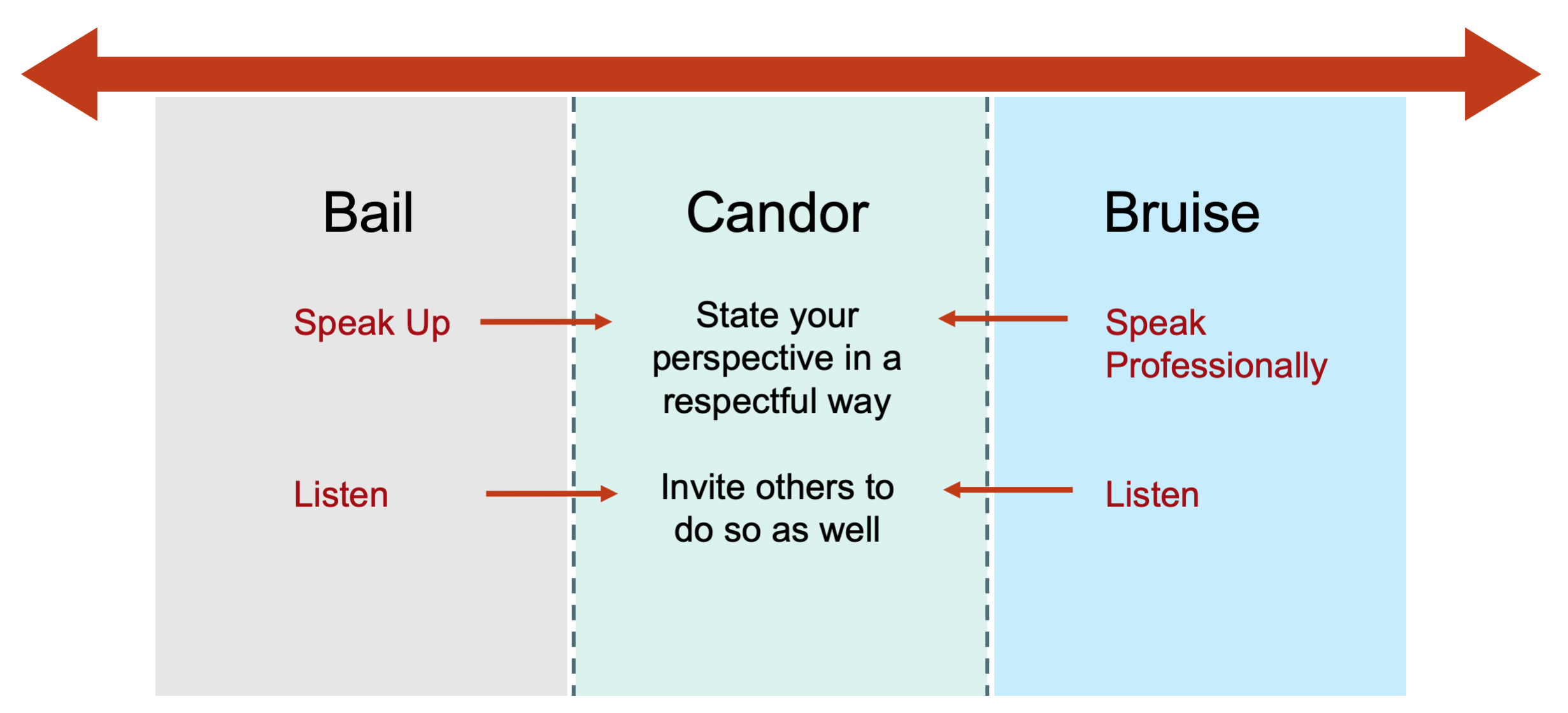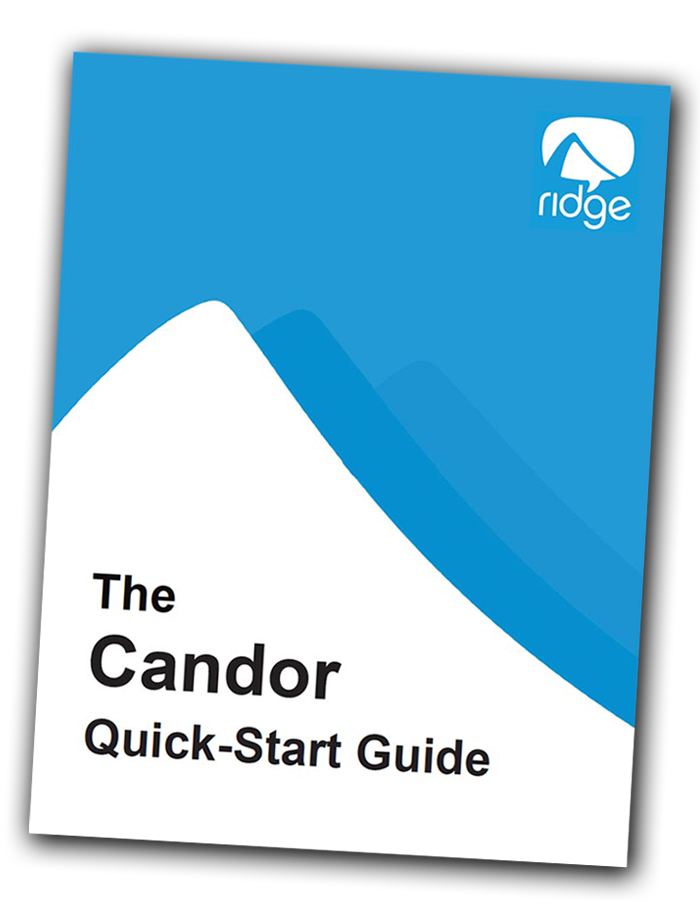“If you want to see someone in real pain, watch someone who knows who they are and defaults on it on a regular basis.”
– Pat Murray, management consultant
Candor is the way in which we express who we really are. But as Murray notes we often default on it. When we do, the consequences can create discord within us and in the relationships important to our success.
Part of the problem is that candor means different things to different people. Many of us think of candor as “telling it like it is,” and “callin’ ‘em like we see ‘em.” But the word candor comes from Latin, meaning “to shine.” That’s what real candor is about—allowing both you and those around you to shine by speaking and listening, openly and genuinely. That’s not always so easy as the “candor continuum” graphic illustrates.

People on the left side of the continuum have a tendency to bail, to simply avoid a potentially difficult conversation by not raising an issue or responding honestly. Speaking up can be hard; people don’t want to rock the boat, alienate a colleague, take a risk, or hurt someone’s feelings. They choose uneasy silence over voicing their perspectives.
Those on the opposite end of the continuum have a tendency to bruise, to communicate in a way that is harsh or harmful. We bruise when we are afraid of being out of control, when it doesn’t look like things are going our way. We may not mean to, but we speak in a way that shuts other people down, from a defensive rather than an authentic posture.
Obviously neither bailing nor bruising results in candor. A more effective alternative lies in the middle: saying what needs to be said in the most productive way possible and encouraging others to do the same.
A few years ago we created a candor “quick-start guide” to help a client promote constructive candor across its entire workforce. You can download a streamlined version of this playbook using the link below. If you want to level up your candor by speaking up (versus bailing), speaking respectfully (versus bruising), or listening—which is the foundation of candor—give it a try. And if you have any tips of your own, please include them in the comments area below.


Leave A Comment